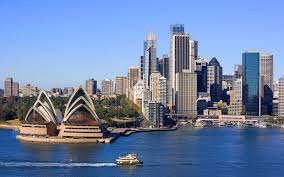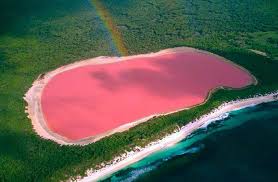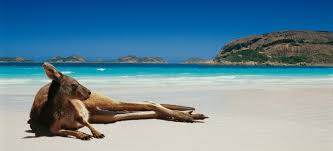The birth of the Melbourne bath
 When guests of Melbourne are interested in the sights of the city, residents primarily call … local baths. “Of course, these are not the famous Roman baths, where the fate of the ancient world was often decided, but on the scale of our country their footprint is very noticeable,” they say. “Although the history of our baths is not so long – only a century and a half.”
When guests of Melbourne are interested in the sights of the city, residents primarily call … local baths. “Of course, these are not the famous Roman baths, where the fate of the ancient world was often decided, but on the scale of our country their footprint is very noticeable,” they say. “Although the history of our baths is not so long – only a century and a half.”
The first line in the Australian “bathhouse chronicle” entered the 200-ton Swedish brig “Nancy”, stranded near the Melbourne coast near Fitzroy Street. The place was called Green Hill, but immigrants from Europe, who mastered the new continent, dubbed it a bathhouse. It is here, as historical chronicles testify, that the builders of the young city hurried in special trailers in order to have a rest by the sea after a busy day, to wash off dust and dirt. In the cabins, they changed clothes and through the hole-hole in the stern entered the water, on the allocated “washing area”. On the ship they were given a special soap, which foamed well in salt water.
The rumor of an impromptu sea bath invented by Europeans quickly spread across the Fifth Continent. Her fame was also added to numerous swim competitions, which, surprisingly to the aborigines, the newcomers were fond of. The richest residents of the city also welcomed the novelty: even they could not afford the luxury of washing at home more than once a week.
However, the bathhouse on Green Hill did not solve the sanitation problems of growing Melbourne. In addition, even in the 80s of the 19th century there was no sewage system in the city, numerous waste was discharged into the river, and with its waters fell into the sea, which turned into a nursery of typhoid and other dangerous diseases. This, of course, concerned the “fathers” of the city, and therefore the proposal of one of them – to build a city bathhouse immediately found hot support. Today, his name is on the list of the most famous residents of Melbourne. This man’s name was Caesar Elliot.
On January 9, 1860, almost the most significant event in the history of Melbourne took place – the grand opening of public baths. The building, which is located on a triangular piece of land at the intersection of Swanston Street and Franklin Street, had first and second class soap dishes, bathtubs for women and men and a pool. And the people tumbled down in the baths. In the first year they were visited by 79 thousand men and 3 thousand women. But the holiday did not last long. For financial reasons, the mayor’s office leased the premises, and over time the baths became worthless. In 1899 they had to close.
Nevertheless, after two years the authorities, under pressure from the public, announced a national competition to create a project of new public baths in the same place. The winner was the famous English architect John James Clark. There was not much money allocated for the construction, and the architect “facilitated” his project by agreeing not to decorate the building from the outside, but to build it so that, if possible, decorative details could be added to it later. The new building was completed on time, but the emergency ceremony delayed the opening ceremony. The Ernigno ship, which was transporting 30 expensive bathtubs from England to Melbourne, sank along the way. A year and a half passed before the mayor was able to solemnly open the doors of the new complex.
The shipwreck entailed an increase in the cost of services in the newly built saunas. But in them all the latest technological achievements, characteristic for the turn of the century, were embodied. It was a whole health complex, which included two pools, 16 Turkish steam rooms, 6 “beauty rooms” and even a Jewish ceremonial mikvah. From those who wanted to visit the bath there was no end. In 1947, when joint swimming was allowed in the pools, the popularity of the complex increased even more. And the success of Australian swimmers at the 1956 Olympics in Melbourne brought him new fame. The number of visitors to the pools has reached 300 thousand per year. True, by the 70s, attendance dropped to 130 thousand, they even began to talk about how to completely destroy the old baths. But the structure itself has already gained historical status, which not only saved it from demolition, but also became the reason for their next restoration. The city laid out $ 4 million, and on August 14, 1983, the official opening ceremony of the city baths on Swanston Street was held again. The third in a row.
Now it is not only the leading health center that residents of Melbourne are proud of, but also its historical symbol. And just a list of services and the latest equipment can impress and interest people with different tastes and capabilities. A 30-meter rooftop pool and another smaller one with heated water, 3 tennis courts and a large sports hall for group and individual lessons, equipped with the latest equipment, a sauna, numerous healing baths, medical, physiotherapy centers. In a word, a real health factory. It all started with a sea bath.



